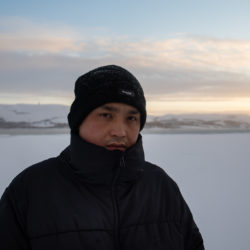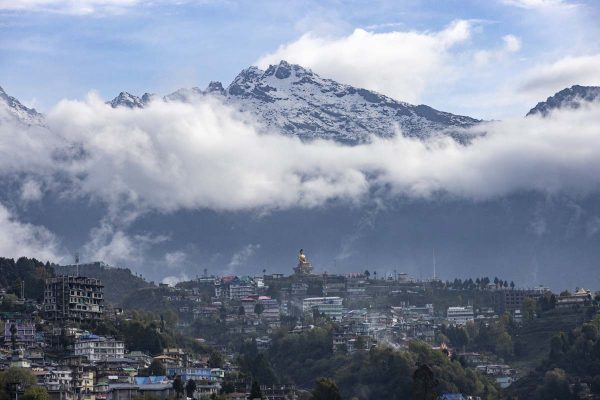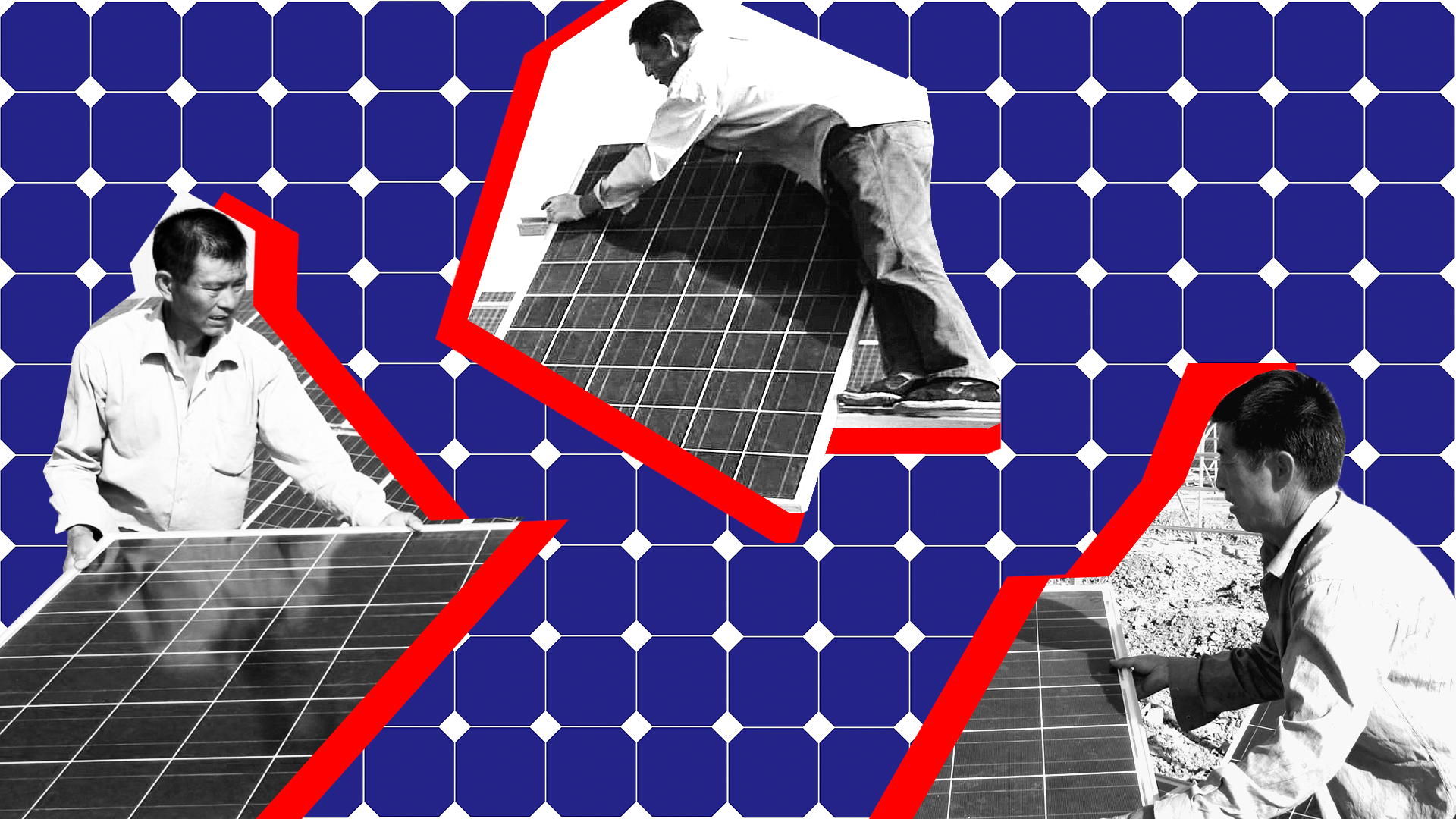
Teona Tsintsadze/Getty Images
Why are climate skeptics speaking out about the Uyghur genocide?
Last month, California’s Gavin Newsom made headlines across the world when he sat down with Chinese President Xi Jinping in Beijing. Flashing a smile for the cameras and going in for a chummy handshake, the Democratic governor’s message was clear. “Divorce is not an option,” he later told reporters of the rocky relationship between the United States and its closest economic rival. “The only way we can solve our climate crisis is to continue our long standing cooperation with China.” Reducing dependence on fossil fuels, Newsom said, is among the most urgent items on the shared agenda of the two countries.
Together, the U.S. and China are responsible for more than a quarter of greenhouse gas emissions worldwide, and both countries need to take action to reduce their dependence on fossil fuels, as Newsom argued on his trip. One technology that most scientists agree will make a meaningful difference for the climate is solar panels. U.S. appetite for photovoltaics is growing, and although it’s the world’s biggest polluter, China happens to dominate the global supply chain for solar panels: Chinese companies manufacture panels more efficiently and at greater scale than suppliers in other countries, and they sell them at rock-bottom prices.
But there’s a big problem at the start of the supply chain. Part of what makes China’s solar industry so prolific is that it is rooted in China’s Xinjiang province, home to a vast system of forced labor in detention camps and prisons where an estimated 1-2 million ethnic Uyghurs and members of other ethnic minority groups are held against their will. There is strong evidence that Uyghurs in Xinjiang live in conditions akin to slavery. Key components of solar energy, in other words, are being brought to much of the world by the victims of what U.S. authorities call an ongoing genocide.
None of this material officially lands in the U.S., owing to the 2022 Uyghur Forced Labor Prevention Act, a federal regulation that restricts imports of any goods from Xinjiang — the only law of its kind among the world’s biggest economies. Still, the topic of solar panel production — a critical weapon in today’s arsenal of climate action — is intrinsically tangled up with Uyghur forced labor. Yet Newsom made no mention of the Uyghurs on his recent China tour, a silence that has become all too common among left-wing and climate advocacy groups. At the same time, the Uyghur plight has captured a certain element of the right-wing political zeitgeist in the U.S. for reasons that are more complicated than one might expect: The Uyghur genocide is a near-perfect reason not to invest in solar energy, a prime talking point for right-wing media personalities and Republican lawmakers known for promoting climate skepticism and disinformation.
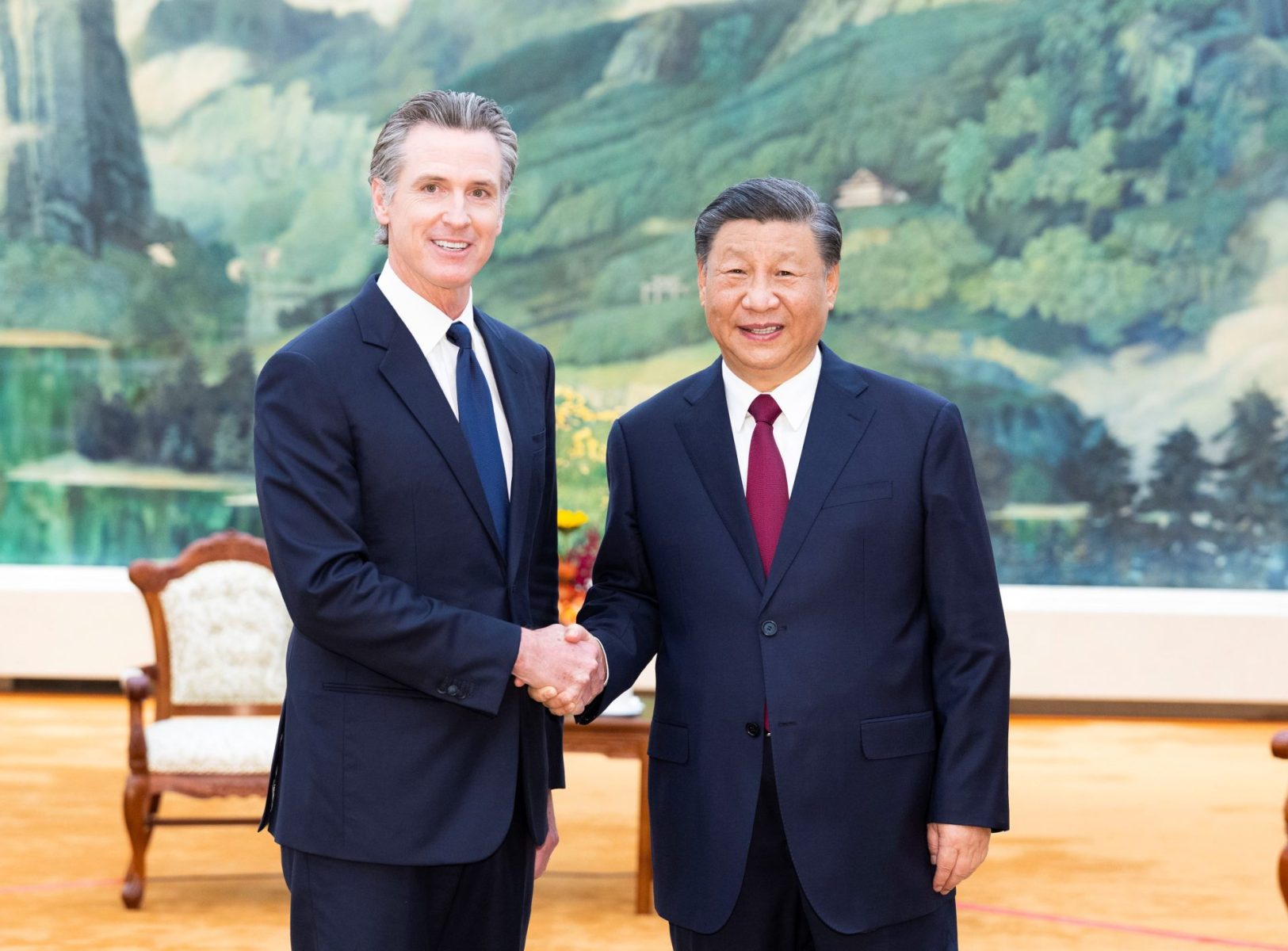
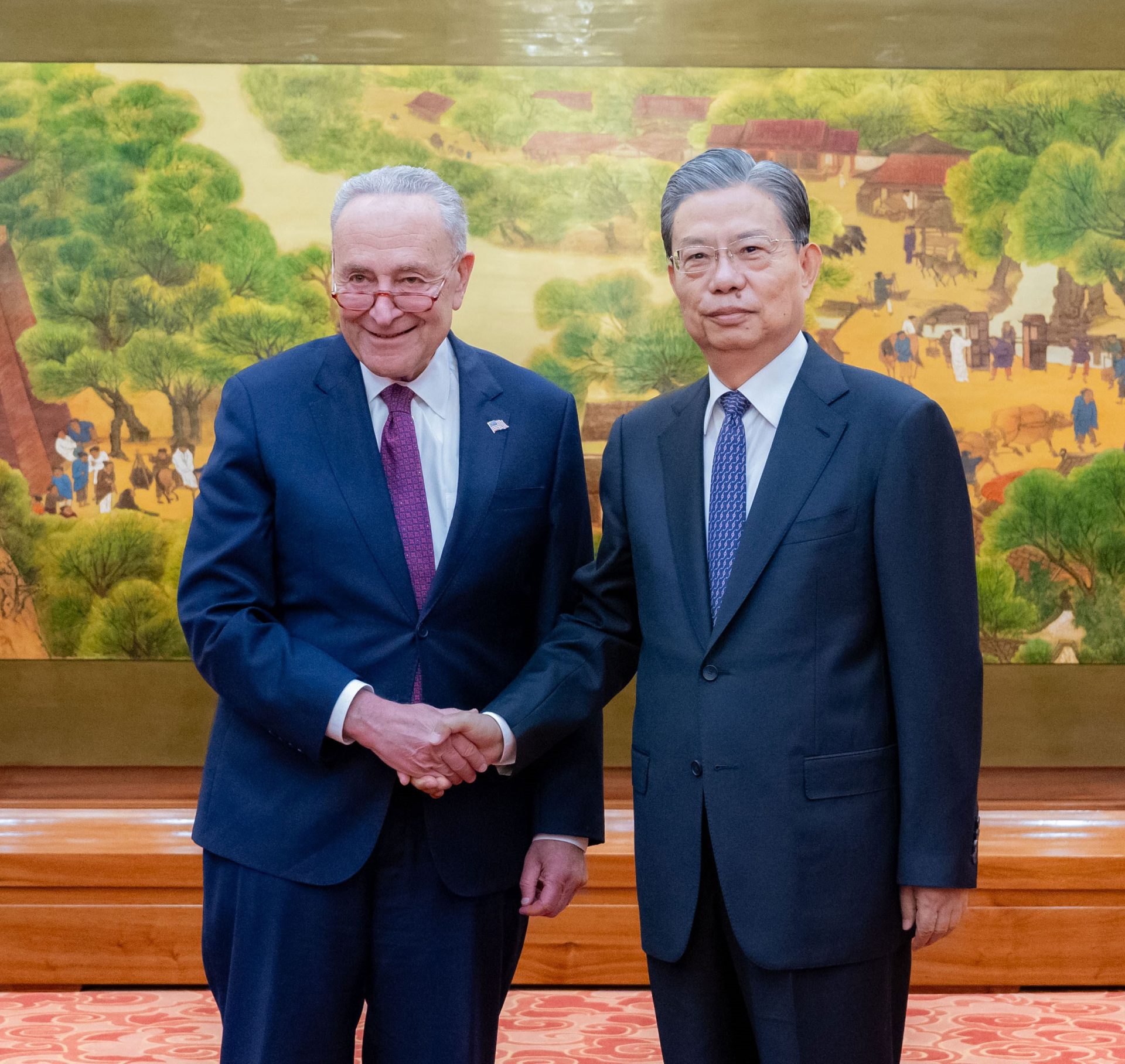
Uyghur forced labor is also unlikely to have come up when U.S. climate envoy John Kerry met with his Chinese counterpart Xie Zhenhua in California last week. Their talks, Kerry later told delegates at a conference in Singapore, led “to some very solid understandings and agreements” in preparation for the upcoming COP28, the United Nations climate summit that begins in Dubai on November 30. The timing of the talks suggests that the U.S. acknowledges that Chinese dominance of the solar industry is unlikely to be challenged anytime soon. In the first half of 2023, Chinese exports of solar panels grew by 34% worldwide, and China already controls 80% of the global market share.
Climate scientists say that we have perhaps only a few years left to reduce emissions and avoid a runaway greenhouse gas scenario, which could lead to rapid sea-level rise, mass desertification and potentially billions of climate refugees. Extreme weather events fueled by the changing climate are becoming more frequent and their impacts more devastating. Canada saw 18 million hectares of forest burn this year, emitting a haze that had people from Maine to Virginia donning KN95s just to walk outside. Last year in Pakistan, historic floods covered one-third of the country.
“The lack of progress on emissions reduction means that we can be ever more certain that the window for keeping warming to safe levels is rapidly closing,” said Robin Lamboll, a climate scientist at Imperial College London, in a recent press statement.
There is an urgent need to reduce emissions from fossil fuels, and solar power is seen as an essential part of how to do this — it’s affordable and can be placed nearly anywhere. Without a rapid increase in the amount of solar installations around the world, limiting climate change might be impossible.
But right now, a huge proportion of solar installations are a product of Uyghur forced labor. A 2021 report from Sheffield Hallam University in the U.K. highlighted the solar industry’s dependency on materials from Xinjiang, estimating that 45% of the world’s solar-grade polysilicon come from the region. The report detailed how Uyghurs and other minorities were made to live in camps that are “surrounded by razor-wire fences, iron gates, and security cameras, and are monitored by police or additional security.” Factories are located within the camps, and Uyghurs cannot leave voluntarily. And there is evidence that workers are unpaid. One former camp detainee, Gulzira Auelhan, told Canadian journalists that she was regularly shocked with a stun gun and subjected to injections of unknown substances. She felt she was treated “like a slave.”
For Uyghurs in exile, what is happening is clear — a genocide that aims to eliminate the Uyghur language, culture and identity and turn their homeland into another Chinese region. Mosques and old Uyghur neighborhoods are being replaced by hotels and high-rise apartments and populated by members of China’s dominant ethnic group: the Han Chinese. Mandarin Chinese is now the primary language taught in schools. “Putting it bluntly, the Uyghur genocide is more real and immediate than climate change,” says Arslan Hidayat, a Uyghur Australian program director at the nonprofit Campaign for Uyghurs. He believes that stories like Auelhan’s barely scratch the surface of what’s happening.
“It’s still not widely known that Uyghur forced labor is used in the supply chain of solar panels,” said Hidayat.
Seaver Wang is a climate director at the California-based Breakthrough Institute, which published another report on the connections between Xinjiang and solar energy last year. Wang hoped the wave of research on the issue would be a wake-up call for the industry and for climate and energy nonprofits. But the reaction has been mixed at best. “Labor and some industry groups were very eager to talk about the issue,” he said. “But other constituencies, like solar developers and areas of the climate advocacy movement, who are really prioritizing deployment and affordability, didn’t want to rock the boat.”
Indeed, major environmentalists and climate groups have said little about the origins of so much of the world’s solar energy technology, possibly out of fear of inadvertently harming the expansion of clean energy. Recent reports on solar in China from international organizations including Ember, Global Energy Monitor and Climate Energy Finance make no mention of the solar industry’s links to Xinjiang.
The same is true for major American nonprofits. Even as they strongly support the expansion of solar, Sierra Club, 350.org, NRDC, Environmental Defense Fund and the National Wildlife Federation make no mention of Uyghur forced labor on their websites or social media. None agreed to speak to me for this story.
Only the Union of Concerned Scientists mentions issues related to Uyghur forced labor on their website and agreed to be interviewed for this story. “UCS strongly advocates for justice and fairness to be centered in all our climate solutions,” said Rachel Cleetus, policy director for the climate and energy program, via email. “The clean energy economy we are striving to build should not replicate the human rights, environmental and social harms of the fossil fuel based economy.” Cleetus declined to comment on the decisions of its peer organizations not to acknowledge the issue.
Dustin Mulvaney, a professor of environmental studies at California’s San José State University, has a theory about why so many climate advocates and groups hesitate to speak on Uyghur forced labor. “It’s an area that people are uncomfortable talking about because they fear it undermines the objectives of getting more solar,” said Mulvaney. “It’s almost as if people are concerned that any information about solar that could be interpreted as a negative could be amplified through the same networks that are doing climate disinformation.”
To wit, U.S. think tanks like the Heritage Foundation and the Heartland Institute, both heavily right-leaning, have released dozens of blog posts, op-eds and interviews focusing on Uyghur forced labor. These groups are also notorious hubs of climate disinformation.
One headline from a Heartland Institute blog post warned that “China’s Slave Labor, Coal-Fired, Mass-Subsidized Solar Panels Dominate the Planet.” An article on far-right news site Breitbart cautioned that the clean energy clauses in the 2022 Inflation Reduction Act “may fund China’s Uyghur slavery.” Further amplifying the focus on Uyghur forced labor in solar are right-wing media outlets like Daily Signal and Newsmax and the pseudo-educational organization PraegerU.
Alongside mentions of Uyghur forced labor in the solar industry, one typically finds far less factual claims — that the emissions generated throughout the life cycle of solar panels are as bad as fossil fuels, that climate change is not responsible for recent extreme weather events, or that “net zero” and socially responsible investment trends are insider tactics meant to weaken the American economy. Some even push political disinformation. There are claims that President Joe Biden is pro-solar because he has received donations from China or because his son, Hunter Biden, has links to China — and that U.S. climate envoy John Kerry is benefiting personally due to his investments in Chinese solar.
Organizations like these are spreading climate skepticism, minimizing the threat of climate change, and casting doubt on its links to extreme weather events. This has also been the refrain from elected officials like Republican Sen. Rick Scott of Florida, sponsor of the Keep China Out of Solar Energy Act, a bill that would further prohibit federal funds from being used to buy solar components from Xinjiang.
Another common argument holds that domestic fossil fuel production is better for the economy than importing solar from China. Support for fossil fuels does seem to be a common link across the groups and political figures focused on the issue. In fact, politicians speaking out about Uyghur forced labor in solar are among the top recipients of political donations from the fossil fuel industry. According to data from Open Secrets, a nonpartisan project that tracks political spending, Scott alongside two cosponsors of his Keep China Out of Solar Energy Act — Senators Marco Rubio and John Kennedy — accepted more contributions from the oil and gas industries than almost all other U.S. senators in 2022.
The U.S. is not the only country where this kind of narrative has found a home. Earlier this year, Taishi Sugiyama, who directs research at the Canon Institute for Global Studies, agitated on the issue after officials in Tokyo announced a plan to mandate solar panels on all newly constructed homes in the city. Like conservatives in the U.S., Sugiyama cited the plight of the Uyghurs as a primary reason to divest from solar. But Sugiyama’s think tank is a well known source of climate disinformation in Japan.
“Sugiyama is basically using absolutely any argument he can, real or false, in order to pursue what he’s aiming for in terms of his anti-climate objectives,” said James Lorenz, the executive director of Actions Speak Louder, a corporate accountability nonprofit focused on the climate. Some of Sugiyama’s allies have close links to Japanese companies importing coal, natural gas and petroleum from abroad. Two of the institute’s board members represent Sumitomo and JICDEC, both major importers of fossil fuels in Japan.
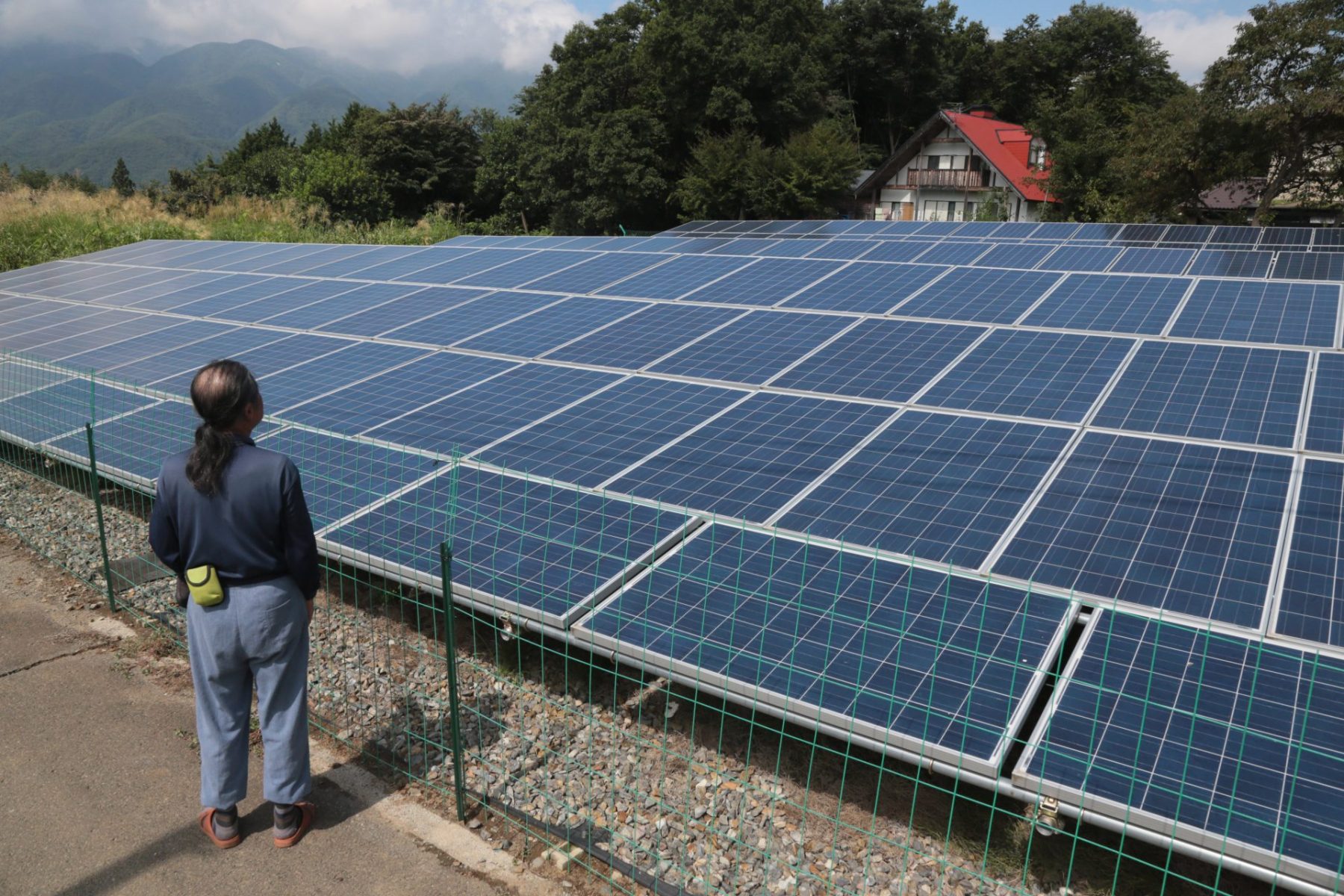
Early reports about China’s crackdown on ethnic Uyghurs, including the detention of thousands of people as part of a massive “political reeducation” program, emerged in 2017. Dustin Mulvaney, the environmental studies professor, thinks that would have been the optimal time to act. “Had the industry had that traceability in place back then, had they had this conversation back then, they might not find themselves in this situation today,” he said.
But now, six years later, both the climate and the Uyghur human rights crisis have worsened. Implicit in the silence from many climate and environmentalists is the idea that, in order to address climate change, the Uyghur cause may have to be sacrificed. Mulvaney feels that environmental advocates have hesitated to criticize solar or bring up forced labor issues for fear of playing into anti-solar messaging.
Mulvaney has personally experienced this, seeing his critiques being misquoted in right-wing media. “But I don’t think it works that way. I think people are a little too guarded in protecting solar from criticism.”
To the Breakthrough Institute’s Seaver Wang, being forced to choose between reclaiming human rights in Xinjiang and ramping up clean energy quickly enough to address climate change presents a false dichotomy.
“We’re willing to have open and frank conversations around responsible sourcing everywhere but China,” said Wang. “I recognize that there are climate versus human rights trade-offs, but let’s talk about those trade-offs rather than just prioritizing climate, because it all factors into equity at the end.”
For Uyghurs like Hidayat, who are used to being ignored by not only climate activists but also by progressive politicians, he’s open to any support and is glad to see people like Rick Scott proposing stronger regulations on solar imports from China, even if their motives are less than pure. At the same time, Hidayat is wary that they might be using the Uyghur crisis for their own political benefits, and would welcome more actions from environmentalists.
“There is nothing clean about using solar panels linked to Uyghur forced labor,” said Hidayat. Instead, he says there needs to be a “change in the definition of what clean energy is. The whole supply chain, from A to Z, the raw materials all the way to its installation, has to be free of human rights abuses for it to actually be defined as green, clean tech.”
How do we get there? Wang wants to see a frank discussion, rather than the silence or politicization that has dominated the debate so far.
“I do think that we could balance clean energy deployment, meet climate ambitions and address human rights in Xinjiang,” said Wang. “But I know it won’t be easy,” he said. “It’s not an unmitigated win-win.”
The story you just read is a small piece of a complex and an ever-changing storyline that Coda covers relentlessly and with singular focus. But we can’t do it without your help. Show your support for journalism that stays on the story by becoming a member today. Coda Story is a 501(c)3 U.S. non-profit. Your contribution to Coda Story is tax deductible.





